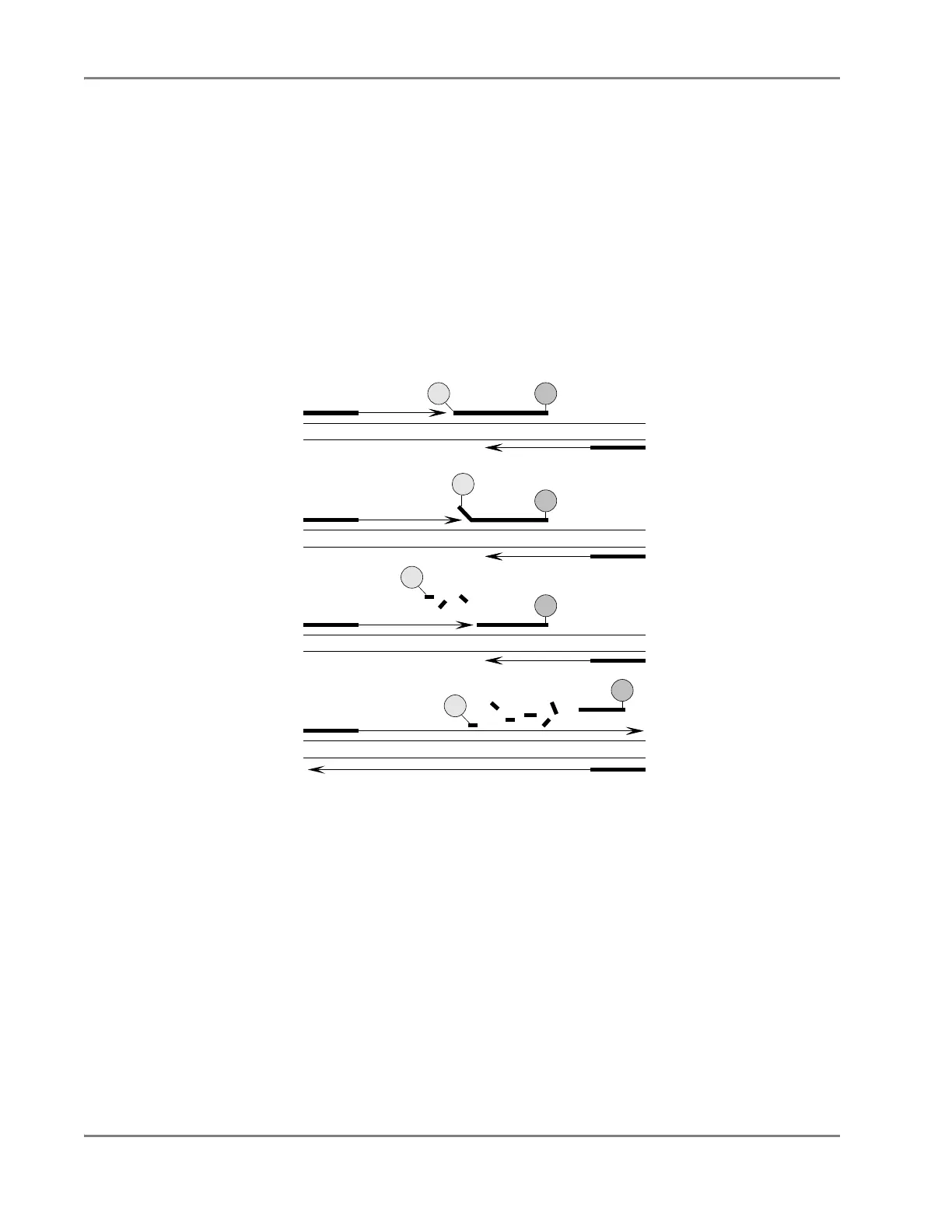DRAFT
September 1, 2004 11:39 am, App_Theory.fm
Appendix D Theory of Operation
D-2 Applied Biosystems 7900HT Fast Real-Time PCR System and SDS Enterprise Database User Guide
Fluorescent-Based Chemistries
Fundamentals of
the 5´ Nuclease
Assay
The PCR reaction exploits the 5´ nuclease activity of AmpliTaq Gold
®
DNA
Polymerase to cleave a TaqMan
®
probe during PCR. The TaqMan probe contains a
reporter dye at the 5´ end of the probe and a quencher dye at the 3´ end of the probe.
During the reaction, cleavage of the probe separates the reporter dye and the
quencher dye, which results in increased fluorescence of the reporter. Accumulation
of PCR products is detected directly by monitoring the increase in fluorescence of
the reporter dye. Figure D-1 shows the forklike-structure-dependent,
polymerization-associated 5´–3´ nuclease activity of AmpliTaq Gold DNA
Polymerase during PCR.
Figure D-1 5´–3´ Nuclease Activity of AmpliTaq Gold DNA Polymerase
When the probe is intact, the proximity of the reporter dye to the quencher dye results
in suppression of the reporter fluorescence primarily by Förster-type energy transfer
(Förster, 1948; Lakowicz, 1983). During PCR, if the target of interest is present, the
probe specifically anneals between the forward and reverse primer sites.
The 5´–3´ nucleolytic activity of the AmpliTaq Gold DNA Polymerase cleaves the
probe between the reporter and the quencher only if the probe hybridizes to the
target. The probe fragments are then displaced from the target, and polymerization of
the strand continues. The 3´ end of the probe is blocked to prevent extension of the
probe during PCR. This process occurs in every cycle and does not interfere with the
exponential accumulation of product.
The increase in fluorescence signal is detected only if the target sequence is
complementary to the probe and is amplified during PCR. Because of these
requirements, any nonspecific amplification is not detected.
5'
3'
3'
5'
R
Polymerization
Q
Probe
Foward
Primer
Reverse
Primer
R = Reporter
Q = Quencher
R
5'
3'
5'
5'
3'
3'
5'
R
Strand displacement
Q
Probe
5'
3'
5'
5'
3'
3'
5'
Cleavage
Q
Probe
5'
3'
5'
R
5'
3'
3'
5'
Polymerization completed
Q
Probe
5'
3'
5'

